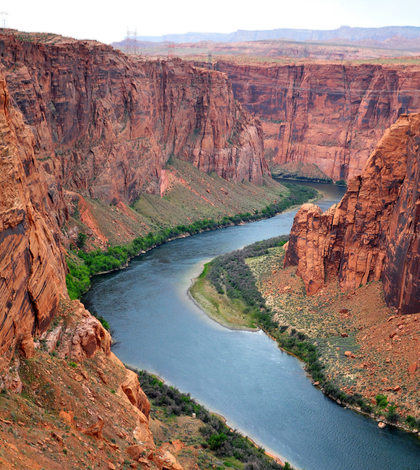A sweeping plan among seven states will ensure that Colorado River water will continue to be a reliable supply of water to Southern California and the Southwest in the coming decade was approved by the Metropolitan Water District (MWD) Board of Directors on Tuesday. After nearly 20 years of drought, coupled with climate change and growing demands, river flows and storage levels in the system’s two largest reservoirs – Lake Mead and Lake Powell – have dropped dramatically. Faced with the impending possibility of Colorado River reservoirs reaching critically low levels, action by the Upper and Lower Colorado River Basin states, and Congress, has become vitally necessary.
“Without action, it is not a matter of if, but when Lake Mead will drop so low that all its users will be harmed,” said MWD Board Chairman Randy Record. “We simply can’t allow that to happen. This supply is too important to the people, farms and businesses of Southern California and the nation. We have been working for more than three years across sectors and states to negotiate this solution.”
Under the Drought Contingency Plan (DCP) the Lower Colorado River Basin states of California, Arizona and Nevada agree to store defined volumes of water in Lake Mead, largely through conservation,if the lake reaches certain levels. The plan is an effort by the basin states that rely on the river to keep the reservoirs from reaching critically low levels that would trigger severe delivery cuts, threaten power generation at Hoover and Parker dams, and prevent Metropolitan from accessing conserved water it has stored in Lake Mead. The plan still awaiting approval from several agencies and Congress.
If Lake Mead reaches a critically low level — dropping to 1,045 feet above sea level, 33 feet below its current level of 1,078 feet, California would make storage contributions of 200,000-350,000 acre-feet a year. These storage contributions would be shared by Metropolitan, Palo Verde Irrigation District, Imperial Irrigation District and Coachella Valley Water District. (As a point of reference, an acre foot of water is nearly 326,000 gallons, about the amount used by three typical Southern California households per year.)
For the Upper Colorado River Basin states of Wyoming, Colorado, Utah and New Mexico, the DCP establishes tools already used in the Lower Basin, including water banking and reservoir management, to maintain higher levels in Lake Powell. However, Arizona and Nevada would begin making storage contributions immediately due to their long-standing lower priority rights to Colorado River water.
If Lake Mead’s level recovers, much of the storage contributions would be returned to each agency.
The initial agreement between the seven basin states was negotiated in 2007 when the Colorado River was in its seventh year of drought and it attempted to address declining Mead and Powell reservoir levels. The DCP builds on the 2007 agreement but has to face the reality of the drought having stretched into its 18th year. Whether droughts, climate change or the increasing demands of a growing population, conditions have deteriorated far more than was anticipated when the original plan was enacted. The bureau of Reclamation has indicated that the risk of Lake Mead reaching critically low levels has increased from 10 percent then to more than 45 percent today, requiring the additional actions.
In addition to Metropolitan, the DCP has already been approved by Colorado, New Mexico, Utah and Wyoming and the necessary agencies in Nevada. However, it still needs approval from Arizona, Congress and several other water agencies.
Metropolitan General Manager Jeffrey Kightlinger summed up the situation and noted that the DCP – slated to be in effect through 2026 — is a bridge solution that allows the seven Basin states and Mexico, which also relies on Colorado River water, to negotiate long-term management of the river.
“This is a tourniquet. It is a very proactive approach that buys us about a decade. But climate change is exacerbating the existing problems of drought and overuse in the Lower Basin. Increased temperatures, decreased snowfall and reduced run-off – those challenges are only getting worse,” Kightlinger said. “We have 40 million people, 5 million acres of farmland and diverse ecosystems that are relying on the success of this river. The real work is just beginning.”
 California Water News Daily Your Source For Water News in California
California Water News Daily Your Source For Water News in California


